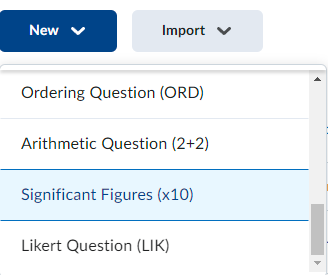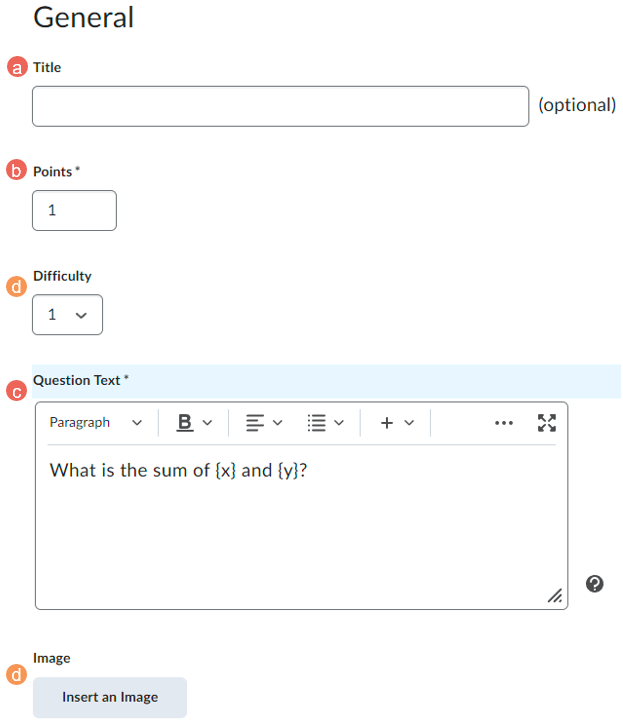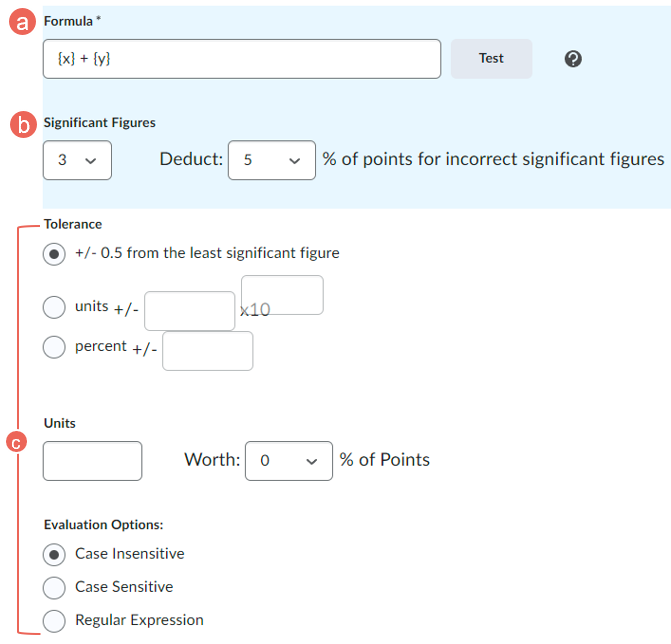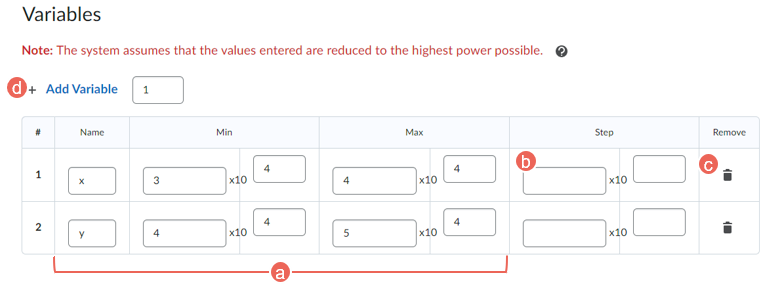Creating Significant Figures Questions (x10)
Significant figures questions require respondents to answer in scientific notation and provide solutions that contain a specified number of significant figures. Math and science units commonly use this question type. You can ensure each respondent receives a unique question by including set variables that randomly generate scientific notations within the problem.
Here are the steps to create significant figures questions
Related guides
- Quiz question converter - create a file to import questions
- Creating Questions in the Question Library
- Creating a Quiz (new interface)
Step One: Access a Question Library or Quiz
Questions can be created in a Question Library or Quiz. For a Quiz, it is recommended to first create questions in the Question Library, then import them into the Quiz. For additional information see the following guides, then return to take the next step:
- Option 1: Creating Questions in the Question Library
- Option 2: Creating a Quiz (new interface)
Step Two: Create a Significant Figures Question
1. From New select Significant Figures (x10).

Step Three: Enter Question Details and Save
1. Fill in general details such as:
- (a) Title: is used for searching or later importing into a quiz.
- Assign (b) Points for the fill in the blanks task.
- Enter (c) Question Text. Ensure each variable must be contained within curly braces { }.
- (d) Optional: Choose a Difficulty level from the dropdown list or choose to Insert an Image to upload an image to accompany your question.

2. Next,
- Enter your significant figures question formula. Ensure each variable must be contained within curly braces { }.
- For example: What is the sum of {x} and {y}? Your formula would be {x} + {y}, which will take a random value for the x variable + with a random value for the y variable.
- Select the number of Significant Figures the response should contain. You can use Deduct to select the percentage of the answer's score to deduct for including incorrect significant figures in the response.
- Optional - Refine answer criteria: use Tolerance to accept a given range of answers from students, Units to assess if answers include correct units of measurement, and then select Evaluation Option.

3. Define mathematical Variables such as:
- Give each variable a Name (e.g: x), a minimum value in Min, and a maximum value in Max.
- The system will later generate a random number within this range.
- Enter Step to sets increments for the min and max values when choosing your variables.
- To reduce the number of variables, select the Remove icon.
- To add more variables, select +Add Variable.

4 (Optional). You can provide students with hints to help them answer the question, and enter feedback to show students after they have completed the question. To do so, select Expand question hint or Expand question feedback.

5. When complete select one of the save options
- Save – save the question and return to the question library, quiz or survey
- Preview - view how the question will be displayed to students
- Save and New – save the question, then create a new question
- Save and Copy – save the question, then create a copy of the current questions

Further Support
Contact us This email address is being protected from spambots. You need JavaScript enabled to view it., for information and resources on technology-enhanced learning, or visit VUCollaborateHelp.vu.edu.au.
Contact ITS Service Desk on (03) 9919 2777 or via self-service servicedesk.vu.edu.au for technical support.
